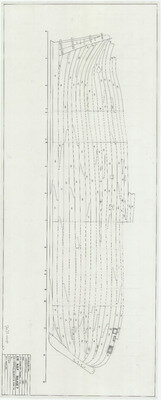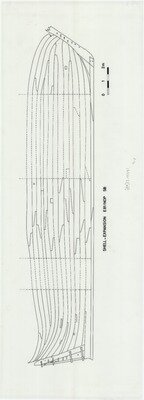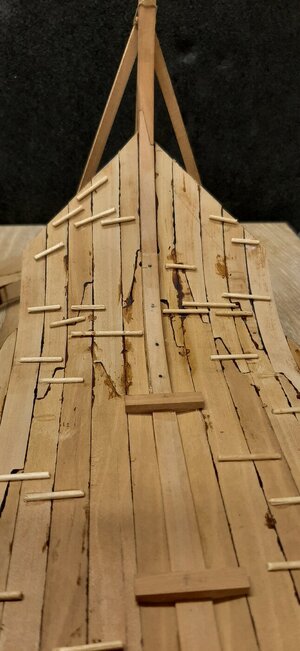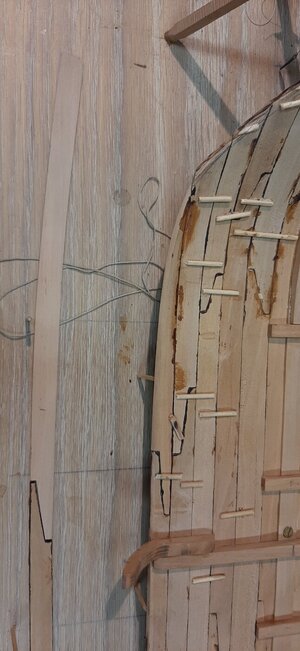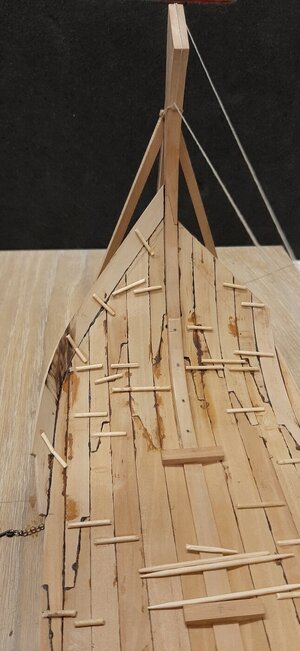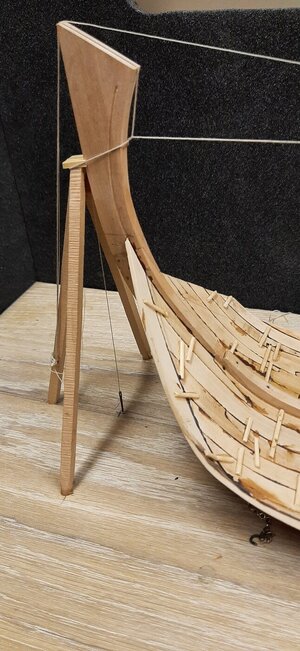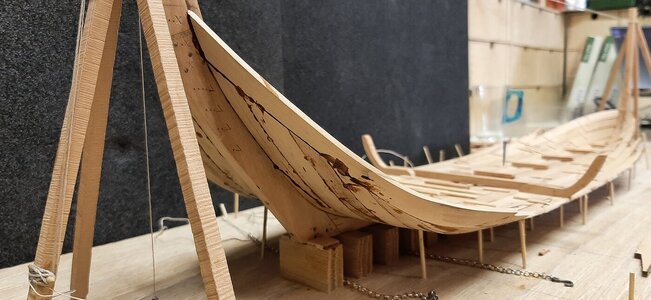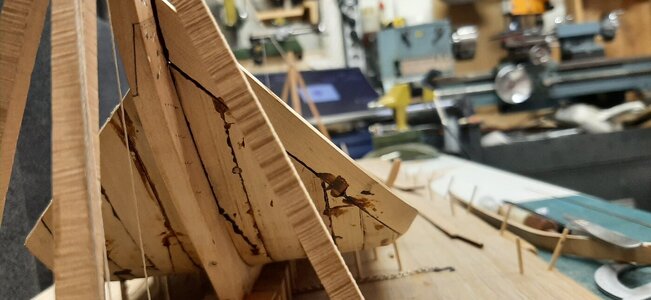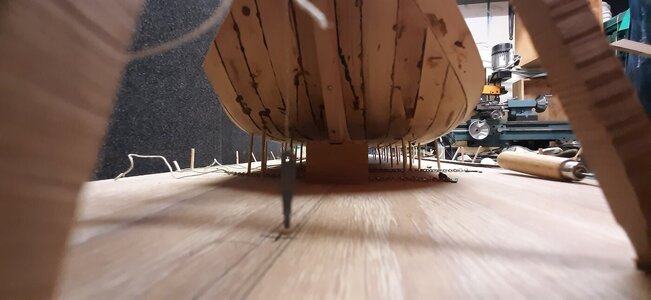After the demolition of last week I started with the reconstruction of the floor planking at the bow. To reduce the angle of the first bilge plank the floor planks needs to be longer running along the stem. To give you an idea of the task ahead see below picture.
View attachment 439727
First I need to shorten the floor planks and create scarph joints to add the new planks. Drilling holes at the ends of the scarph joint followed by the japanese saw will do the trick.
View attachment 439728
Then dilluting the glue again with acetone and the plank sections are easily removed. After cleaning with a needle file the planks are ready to receive their new ends.
View attachment 439730
View attachment 439729
I keep the added planks more then long enough so I can trim them when the first bilge plank is fitted.
View attachment 439731
Hopefully this weekend I find some time to fit the remaining floor planks.



